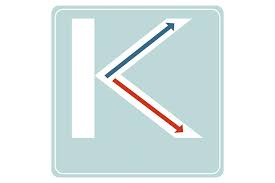Famed economist John Maynard Keynes described the economy as a social organism, alluding to the vast interdependent network of industries that depend upon one another. Like all organisms, economies adjust, thriving in favorable environments, and evolving in unfavorable ones. Well ahead of his time, Keynes noted that to truly understand how economies adjust to changing circumstances over time, we must account for the social and psychological elements that influence the behavior of the public.
A lesson not lost upon economists today, as many are developing models to predict how economies will rebound post-pandemic by accounting for post-pandemic consumer behavior in their models. While most project an optimistic 2021, there are a few economists taking a more nuanced approach in projecting post-pandemic economic growth.
Leading economists within the International Monetary Fund and JP Morgan are predicting a K-shaped recovery, which derives its name from the diverging paths taken by different parts of the economy, resembling the two arms of the Roman letter “K” when charted over time.
According to a report by JP Morgan, K-shaped recoveries occur when different parts of the economy recover at different rates – which are in contrast with a more uniform recovery across different industries within the economy. A K-shaped recovery implies that there will be structural changes in the economy or within the broader society due to fundamental changes in the economy transpiring over the course of the K-shaped recovery.
Early in the pandemic we realized that economic recovery may be slow and may lag the initial, more optimistic projections by months. Late in the pandemic we found that while recovery may be slower than other non-pandemic recessions, recovery also appears to be disjointed, that certain parts of the economy are recovering faster than other parts.
Something not normally seen in most recessions, but commonly seen when the economy is undergoing fundamental, structural changes in the process of recovering from the recession. And when we examine the fundamental, structural changes currently taking place in our economy, the most immediate, apparent change is the change in patient behavior.
When observed in aggregate, changing patient behavior predicts changing consumer behavior, and changing consumer behavior changes spending behavior across various industries within the economy.
Simply put, people are now prioritizing – more than ever before – their basic health when making fundamental economic decisions.
A shift not yet appreciated among foremost economic leaders. The World Economic Forum seems to believe that the diverging patterns of economic recovery are demarcated along traditional lines of economic recovery, the commonly observed split between large corporate conglomerates and individual consumers. Through this belief, the forum argues that economic aid to individuals would help spur economic growth where it is most vulnerable.
Yet we have seen what most consumers do when offered economic aid in the form of stimulus packages during the pandemic – they save, they do not spend. This means they do not contribute to economic growth, since economic growth comes from spending, whether that is spending as consumers or spending as small businesses.
According to the National Bureau of Economic Research, 60% of the stimulus spending from the Coronavirus Aid, Relief, and Economic Security (CARES) Act went to pay off debt or was saved, with 20% using nearly all the stimulus payments to pay off debts. Of the roughly 40% that was spent on goods and services, consumers favored food and beauty products rather than large durables goods like cars or appliances – the latter of which would have maximized the positive impact on the economy.
The counterintuitive effects of the stimulus were surprising, though not entirely unexpected, as many economists have argued that a pandemic-driven recession is different than a traditional recession – which means the economic tools that can encourage recovery out of this pandemic must also be different.
To understand these tools, we must change how we perceive consumers, and incorporate a heightened emphasis on public health in consumer decision-making – merging the perceptions of patients and consumers into a new combined entity, called healthcare consumerism.
And consequently, view economic recovery in terms of healthcare consumerism, modeling consumer behavior in lieu of their behavior as patients.
An analysis conducted by the Boston Consulting Group seems to corroborate this notion. In a recent white paper, the firm compared how various industries have been affected by the current pandemic-led recession relative to the Great Recession just over a decade ago, and found the greatest disparity came from the healthcare sectors. While nearly all industries showed different degrees of losses in both recessions, the biopharma, medtech, and healthcare provider sectors demonstrated positive growth during this current recession, while showing losses similar to other sectors during the Great Recession.
While the reasons for the disparity may seem obvious – after all it was a viral pandemic that caused the current economic downturn – the disparity should have prompted new insights into post-pandemic consumer spending, which should have then prompted new solutions to promote consumer spending. Yet it did not. We still tried the same methods with considerably less effectiveness.
Healthcare consumer behavior is distinct from traditional consumer behavior. The fear of public health risks upon individual decision-making – whether it is deciding what job to take or where to vacation with friends – is far more pronounced in healthcare consumer behavior.
Something manifestly apparent as we look across our society, we see certain groups thriving while others are still struggling even in the latter days of the pandemic. Employees able to work from home have maintained jobs and income, accumulating more savings while others have lost their jobs and income, or closed businesses and have struggled to household expenses.
This disparity is the real divide creating the diverging patterns in the K-shaped curve – which we can analyze by studying the changing consumption patterns among healthcare consumers.
Through our own internal surveys and by referencing data derived from the McKinsey Global Institute, we were able to decipher certain patterns of behavior that are likely to persist, and certain patterns of behavior that are likely to fade once the pandemic passes into the annals of history. And by studying the patterns of behavior, we can predict the parts of the economy that are likely to grow.
Behaviors that will become increasingly prevalent – online grocery shopping, virtual healthcare experiences, home goods and services
Behaviors that will become less common – live entertainment, virtual education, restaurant dining
The distinguishing factor to determine whether a particular behavior will become more or less prevalent is to compare the health risk relative to the value gleaned per behavior. Those behaviors that put individuals at a greater health risk without a commensurate increase in value to the consumer will become less common.
But other behaviors, such as virtual health, which provides healthcare engagements at the convenience of home, or without the normally abhorrent wait times, provides minimal health risk while maximizing the value of convenience to the consumer.
Post-pandemic healthcare consumerism is a relatively new trend which will define public consumption patterns for years to come. While we are still learning how these trends will play out, we can safety surmise that studying healthcare consumerism as a ratio – health risk to value gleaned – will predict the likely trend for that behavior.
Revealing how the social organism will adjust to the post-pandemic economy.















